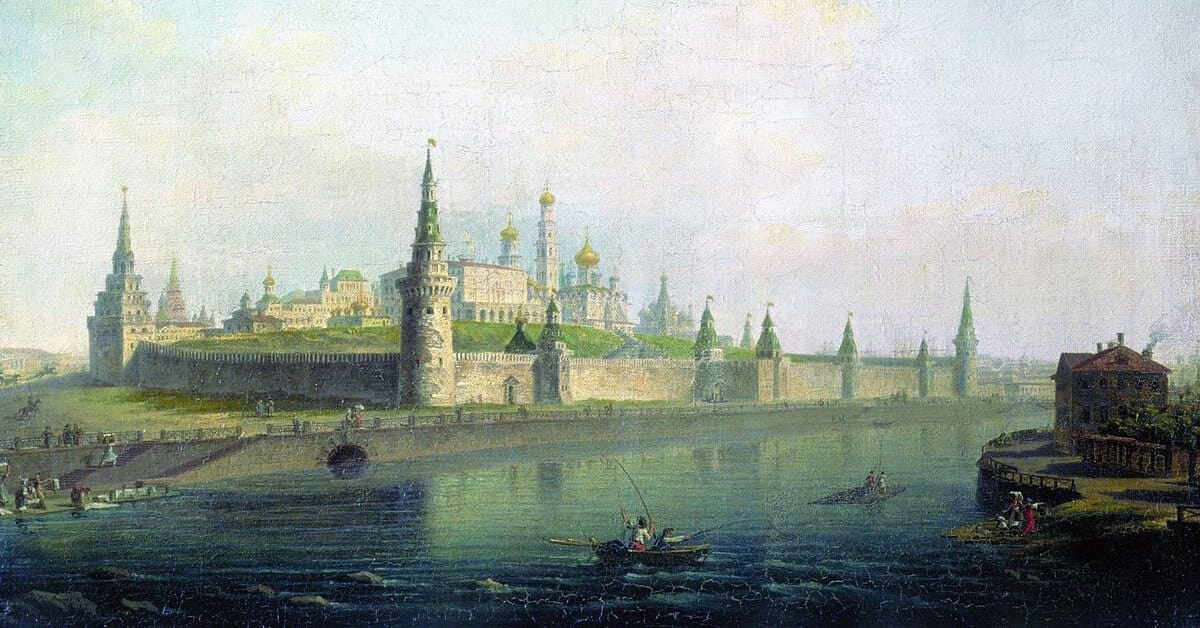There is a widespread story that the empress, who did not like the former capital, ordered the destruction of the Kremlin. Authors of media about the heritage of Russian regions "In the woods» specially for “Verified” we figured out whether such a statement is reliable.
Materials with headings like “How did Catherine the Great destroy the Moscow Kremlin?" or "Why could the Moscow Kremlin be destroyed?” are published from time to time by both bloggers and cultural media. Some media, however, write that the Empress ordered the demolition of only part of the Kremlin buildings. Questions about the reasons and circumstances of such a radical decision, allegedly taken by Catherine II, are raised on “Mail.ru replies"and various forumswhere the destruction of cultural heritage during the reign of the empress compared with the scale of destruction under Stalin.
By the middle of the 18th century, the Moscow Kremlin was in need of repair. In 1765, the Synodal Office even canceled religious processions along the Kremlin walls, since in many places they were dismantled or dilapidated so much that it was dangerous to walk on them. This did not escape the attention of Catherine II. During one of her visits to Moscow she noted: “This ancient city is like a theater temple: splendor and gold blind the eyes, and behind the scenes there is dust and dirt.”
In 1768 there was established a special Expedition to the construction of the Kremlin Palace to control and organizations construction and repair work on the territory of the complex. Architect Vasily Bazhenov proposed a project for a new Kremlin Palace, which included combining part of the existing buildings into a single ensemble. The new buildings were to be located in the southern part of the Kremlin and go out to the river, surrounding the bell tower of Ivan the Great and some buildings of the Cathedral Square. When the design of the new complex was completed, members of the expedition drew up a detailed estimate of the work. According to estimates, their cost reached 50 million rub., 5 million of which were to be spent on the construction of the grand staircase leading to the river. Catherine II approved project and provided the necessary construction loan.
Since the new palace was supposed to occupy the entire riverine territory of the Kremlin, in 1770 the dilapidated Zhitny and Money Courts, the Reserve Palace of Boris Godunov, the building of ancient orders, the courtyards of the cathedral clergy, the Embankment Gardens, part of the monastery farmsteads and single churches were dismantled. Also demolished gallery of the Armory Chamber, erected by Dmitry Ukhtomsky quite recently, in 1764. In 1771, Catherine II ordered the demolition of part of the Kremlin wall “along the Moscow River from the Church of the Annunciation to the Church of Peter the Metropolitan” to make way for the main staircase to the banks of the Moscow River. The churches remained untouched. At the same time, an agreement was concluded, which stipulated “the demolition of the city wall with the Tainitsky gate and the alarm tower standing on the wall and fifty fathoms from the middle of the gate on both sides.” Thus, by 1773, the Tainitskaya and First Nameless towers, as well as the wall between the Petrovskaya and Blagoveshchenskaya towers, were dismantled.
On June 1, 1773, the ceremonial foundation of the palace began on the site of the dismantled Tainitskaya Tower. Construction was constantly interrupted: either the plague epidemic and the Plague Riot, or the war with Turkey. In May 1775, construction finally stopped. The official reason was the threat of destruction of the Archangel Cathedral, close to which a ditch was dug for the foundation of the palace. According to some data, the empress’s decision was influenced by her dislike for Moscow and excessive financial costs. In the summer of the same year, restoration of the dismantled walls began. Empress's decree in detail explained, how the restoration should be carried out: “Do the same exactly in the same form and figure as before, without making a mark on a single feature.” At the beginning of 1782, the entire dismantled wall with the Tainitskaya and First Nameless towers was rebuilt “in its previous form, except for the whitewashing.” The dismantled churches and palaces were not restored.
Thus, Catherine II ordered the destruction of only part of the Kremlin buildings: the Zhitny and Monetary courtyards, the Reserve Palace of Boris Godunov, the building of ancient orders, the courtyards of the cathedral clergy, the Embankment Gardens, part of the monastery farmsteads and single churches, as well as the gallery of the Armory Chamber. A separate decree of 1771 included the Tainitskaya and First Nameless Towers on the list, as well as the fortress wall between the Petrovskaya and Blagoveshchenskaya towers. All these decrees were carried out.
Cover photo: M. Vorobyov. View of the Moscow Kremlin (from the Kamenny Bridge). 1819. State Tretyakov Gallery (Wikimedia Commons)
- Is it true that the Novokuznetskaya metro station is decorated with benches from the bombed Cathedral of Christ the Savior?
- Is it true that Derbent is 5000 years old?
If you find a spelling or grammatical error, please let us know by highlighting the error text and clicking Ctrl+Enter.






